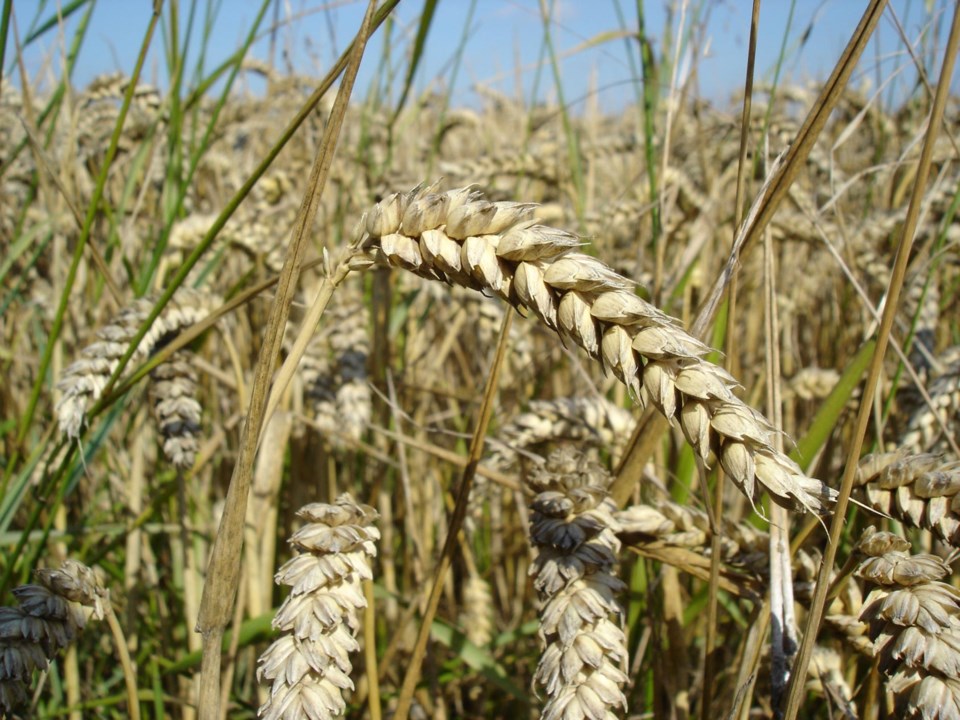By Melanie Jacob
Journal Editor
[email protected]
After a lot of debate and finger pointing, the federal government has implemented a number of new regulations to avoid a repeat of last year's grain transportation delays.
The new regulations include setting a minimum volume of grain to be transported weekly from Aug. 3 to Nov. 29 of this year. The federal government (and other levels of industry) will also be able to obtain regular transportation status updates and information from the Canadian National Railway (CN) and the Canadian Pacific Railway (CP), which should ensure more efficient and guaranteed grain transportation. Finally, the new policies will outline compensation for farmers in the event that grain contracts are broken.
"The new regulations are giving a little more power to the corn group to find out what the grain movement is and to track that," said David Marit, president of Saskatchewan Association of Rural Municipalities (SARM). "It puts some onus on the grain companies so that they're ready to fill the cars when we (the grain elevators) get them. There also had to be a mechanism that if the rail cars weren't providing the service, to deal with it in the right way."
More than just putting regulations and enforcement in place for the rail companies, Marit said there also had to be a failsafe in place to ensure there would be no retaliation against the farmers. Should the rail companies be found at fault, they shouldn't be able to hold back service as retribution.
"These regulations are all fine and dandy, giving grain farmers and companies the ability to appeal, but what happens in the event that the railways are found at fault?" asked Marit. "They are just not going to give you as many cars next year. Now (farmers and grain elevators) will be able to challenge that if the rail companies aren't providing the same service."
With these new policies, the grain industry has a means to challenge the railway companies, including contracts with obligations. Before this, there were no review processes to monitor and address grain industry concerns, such as the belief that rail companies were prioritizing quantities other than grain.
"Now it's a two-way contract that both sides have to honour," said Marit. "If they feel they aren't getting the appropriate service, they can challenge it. It's already a new crop year and we're still loading last year's crop."
Despite the satisfaction expressed by the grain industry at these new regulations, that doesn't mean it's an open and shut case for the railways. Despite the public criticism, CN states there were no structural problems that led to this situation. It was simply a set of unfortunate circumstances, including bad weather conditions.
"It's truly unfortunate that the federal government has decided to introduce extensive regulations in reaction to a 100-year grain crop that has been handled reasonably well in the normal course of business," said Claude Mongeau, CN president and chief executive officer, in a public response to the federal government's Aug. 1 announcement regarding the new regulations. "As there are no structural problems to fix, there is no need for such burdensome and ill-advised regulatory intervention. The government's approach can only stifle supply chain collaboration and may ultimately undermine investment in the rail sector."
According to an email response by CN, the leftover crops from last year equal approximately 18 million tonnes, which is "only 5.5 million tonnes higher than an average carry-over." With that said, CN said it's in an efficient position to handle this year's crops. Moreover, their 2013-2014 numbers show that their movement of grain was still "a full 25 per cent greater than past average performance."
"Given Agriculture Canada's latest 2014-2015 crop forecast of 59 million tonnes - slightly higher than a trend-line average crop - the current throughput level for the rail industry should be sufficient to eliminate all the excess carry-over of grain by as early as next spring."
Despite CN's assurances, these new regulations require both CN and CP to move 536,250 tonnes of grain weekly, which should have last year's crop transported earlier than next spring.
In the end, regardless of which side has the more valid point, the fact remains that the regulations will act like a stick to the railways' back, forcing them to perform. If one of the parties in the new grain contract fails to perform, heads will roll.




